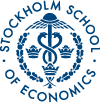No 416: Proximity-Concentration versus Factor Proportion Explanation: The Case of Swedish Multinationals in the EU
Thomas Mathä ()
Additional contact information
Thomas Mathä: Dept. of Economics, Stockholm School of Economics, Postal: Stockholm School of Economics, P.O. Box 6501, S-113 83 Stockholm, Sweden
Abstract: Both proximity-concentration trade-off and factor proportions explanations have been forwarded to explain the existence of multinational enterprises. This paper analyses to what extent these different explanations are supported empirically, in making a first attempt to distinguish explicitly between horizontally and vertically integrated multinationals. The affiliate production share of horizontally integrated multinationals is mainly explained by low plant-level economies of scale, large host country size and similarities in relative factor endowments. Differences for vertical multinationals appear with regard to firm- and plant-level economies of scale, country size, trade costs and relative factor endowments at the national and sectoral level.
Keywords: Trade Costs; Country Size; Factor Endowments; Horizontal & Vertical Multinationals
19 pages, First version: November 15, 2000. Revised: December 8, 2000.
Full text files
hastef0416.pdfFull text
Questions (including download problems) about the papers in this series should be directed to Helena Lundin ()
Report other problems with accessing this service to Sune Karlsson ().
This page generated on 2024-03-10 04:36:02.

